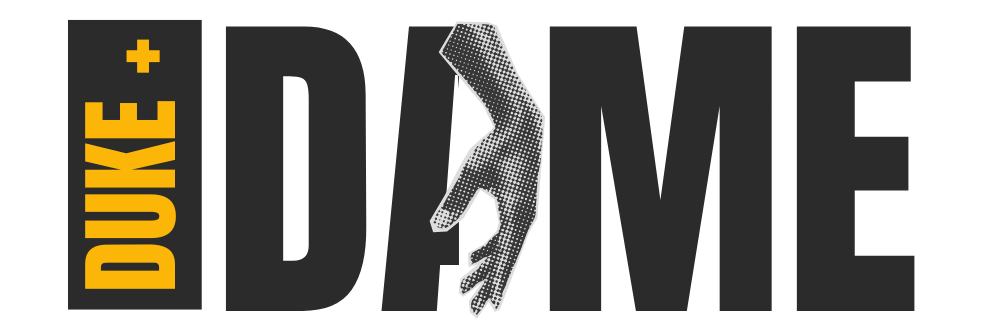The Indie Player vs. The Massive Multiplayer: Choose your Creative Game
In the ever-challenging world of content creation, I believe creatives will soon be faced with a choice as the timeline splits: Do they play the game for a smaller, more intimate audience, or aim for the global leaderboard, where the competition is fierce and the strategy more complex? I see creatives quietly brokenhearted as they throw sacred pieces of themselves into the global sphere, only to be met with a deathly silence. They misinterpret the empty echoes as a direct reflection of their work. The ego responds: “It must not be good enough, relevant enough, or perhaps I’ve chosen a frivolous path.” When, in reality, you may be on the wrong timeline, making your art for the wrong game. Since the connection of the worldwide web, many have been tricked into thinking there is only glory in one ending—global success. However, there is another viable game that might be your aligned quest. If sincere, what you are creating is perfect, the timeline however may not be.
My world exists in metaphors and analogies. It’s a way I have taught my mind to out-smart the confines of the ego and dissociate long enough for alternative view. For the purpose of this analogy – it came to me in the form of Indie Player and the Massive Multiplayer creatives.
Clause: For the hard core gamers out there, allow some room from symbolic interpretation that may deter from the origins of the term.
The Indie Player: A Focused, Player 2 Player Quest
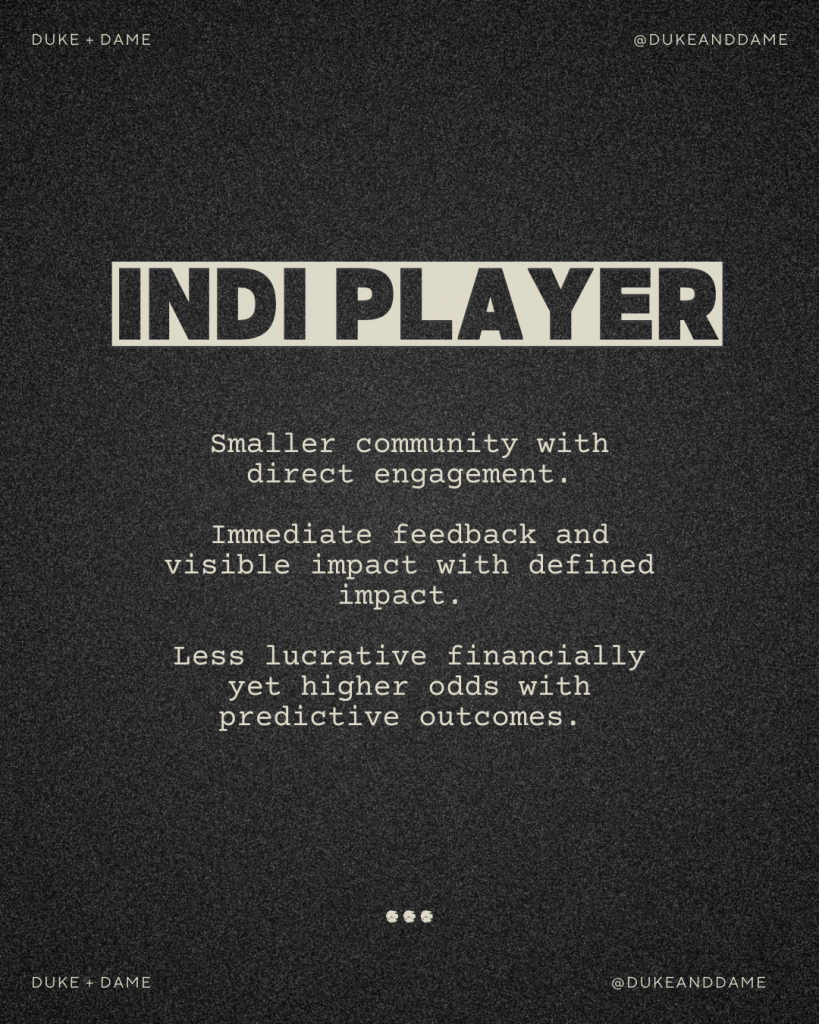
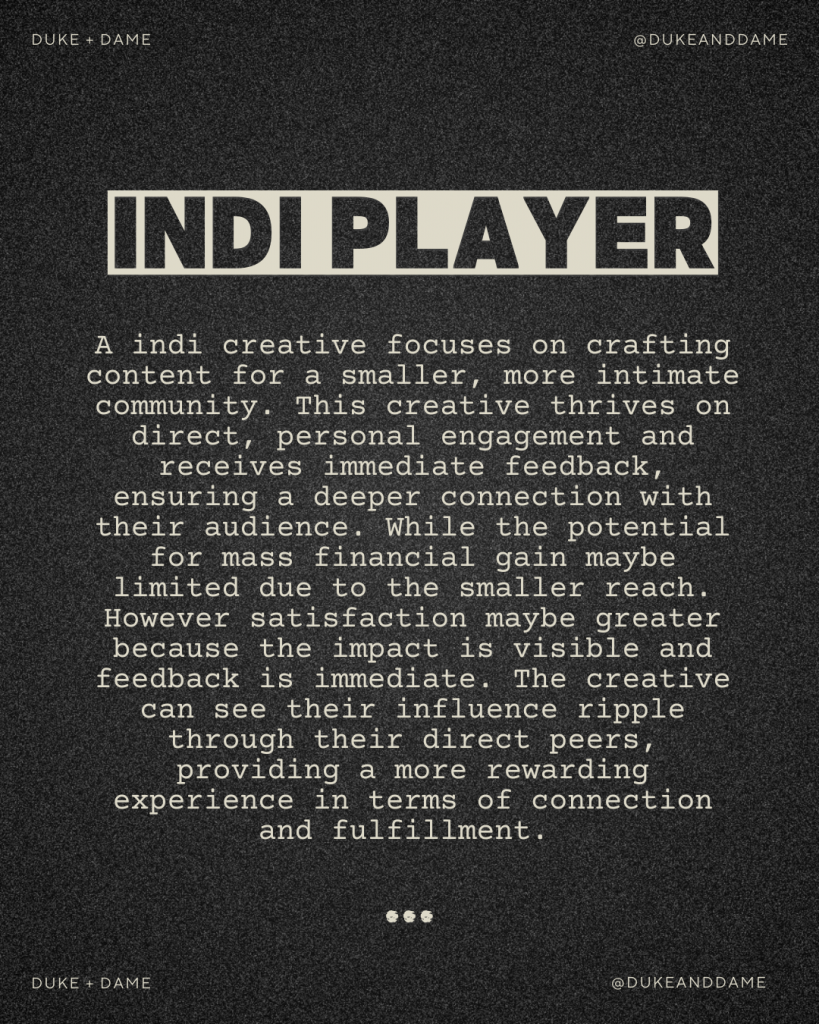
An Indie Player activates a smaller, more intimate quest. Instead of battling for global recognition, their mission is to connect deeply with a direct audience, creating content that resonates on a person to person exchange. These are the artists/ creators who enter their work into local galleries, festivals and business communities. This type of creative game is actually more suited to most players and has its own unique set of rewards:
- Smaller, Personal Quest
Think of this as a player to player quest in a game—focused, specific, and incredibly satisfying. The Indie Player is working within a tight-knit group, whether it’s a specific community, a fandom, or a targeted network. Not to be mistaken as a “niche”. They craft content that serves this smaller community directly, much like completing a side quest in a game that’s tailored to the needs of a few characters. The work is inter-personal, with every achievement feeling like a meaningful step forward. - Immediate Feedback & Impact
In player to player Indi quests, you often get immediate feedback. Did you complete the task? Are you getting closer to your goal? They receive instant responses from their audience—whether through sold out schedule of bookings, referral (no ad budget needed) or online engagement. This allows them to measure success quickly and tweak their strategy. It’s a fulfilling loop of progress that keeps the creative’s momentum going. - Lower Financial Rewards, Higher Satisfaction
Just as Indie quests in games may offer smaller rewards. Don’t get me wrong, there is ample money to be made for Indies however not to the degree the “experts” spruik on their Instagram or LinkedIn videos. However, the emotional and relational payoffs are huge. These games can be bootstrapped with your funding and need little capital investment (and BS). With a Indi quest, there’s less chance of feeling ignored, and the connection to the audience is immediate reward. The win comes from the deeper, more personal engagement, not from grand-scale riches. There is a dominating psyops on social media that creatives must be a MMP to be deemed a success. Our feed is saturated with experts boasting $50K-100K month’s if you follow their simple system. However when you ask yourself the confronting question of “What creative am I?”, you may find relief in the honest answer.
The Massive Multiplayer: High-Stakes, Global Game
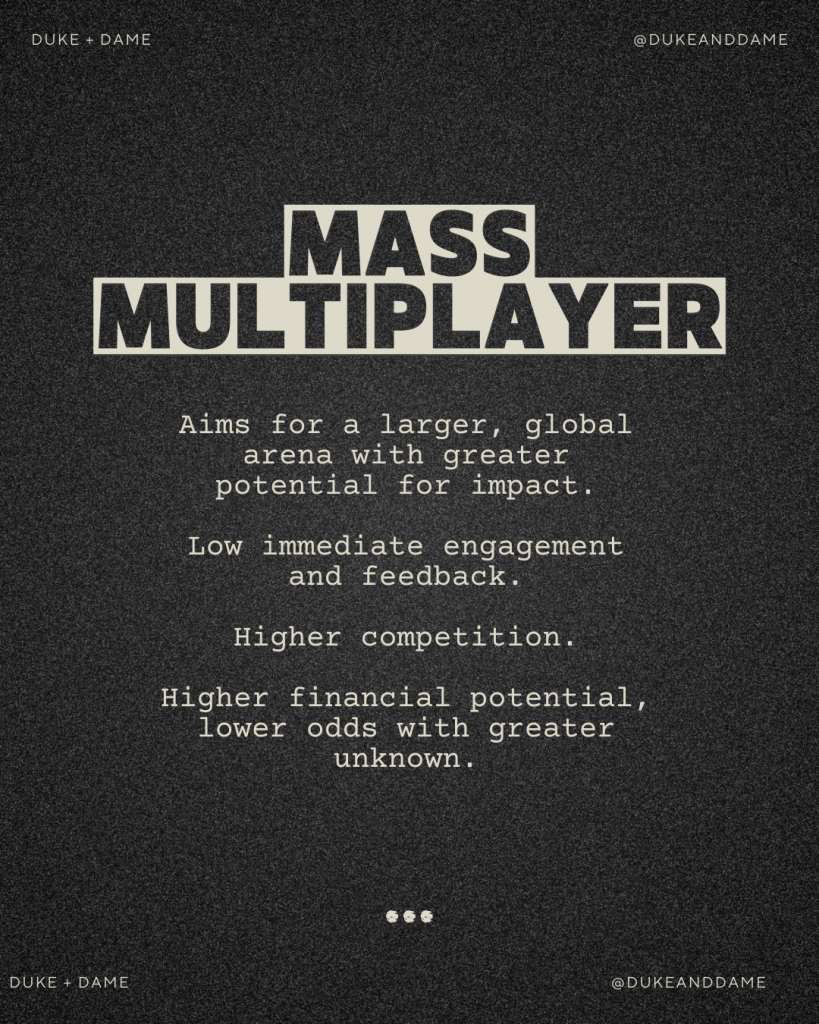
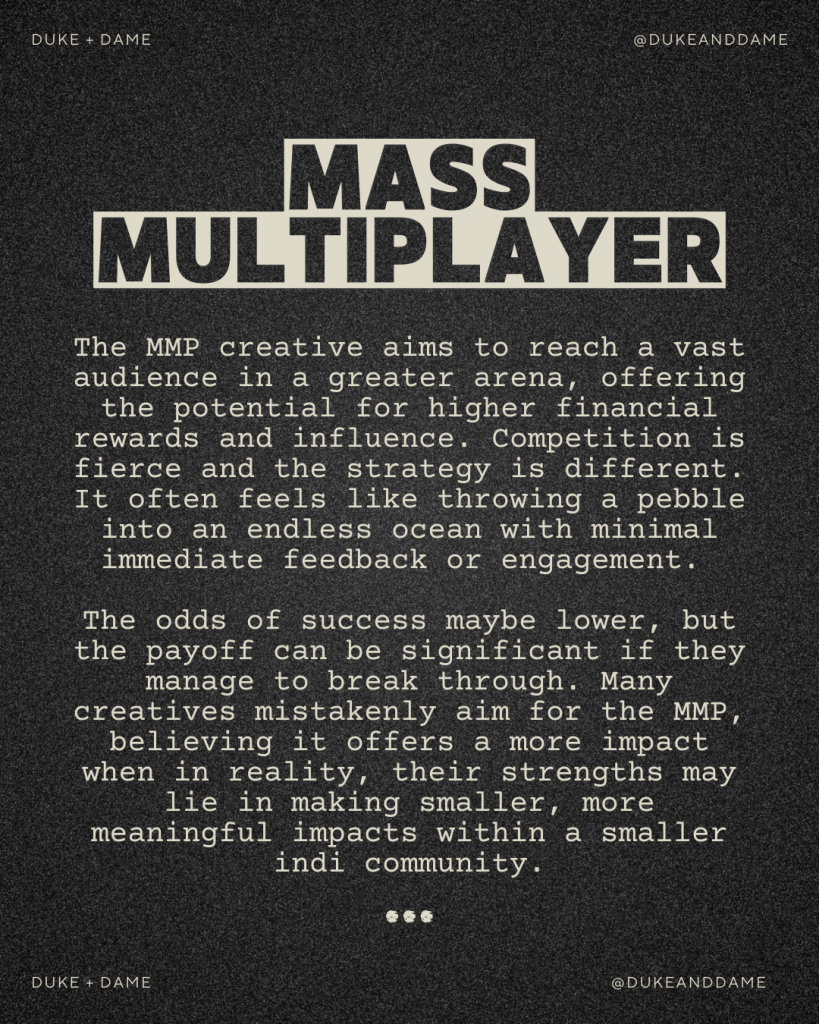
On the other parallel timeline, the Massive Multiplayer is playing a different game—one where the stakes are higher, and the potential for global success is ever seductive and present. These creatives aim for a larger audience, hoping to reach the top of the leaderboard. But with that grand quest comes greater challenges and risks:
- Epic Quest with Global Reach
The Massive Multiplayer creative’s objective is to reach as many people as possible. It’s a quest for influence on a much larger scale, hoping to gain visibility in the vast sea of content and hit the global stage. This game is like exploring the vastest regions of an open-world game, where the potential for influence is limitless. The mission is grand, but so are the challenges, and the stakes are significantly higher. - Delayed Feedback & Low Engagement
Just like an open-world game, where you might venture through uncharted territories, feedback is slower and often harder to come by. The Massive Multiplayer creative may feel like they’re working through a massive MMO, waiting for their hard work to be noticed in a sea of other players. Engagement is often lower at first, and feedback is spread out, making it difficult to measure success in real-time. - High Financial Rewards, Low Odds of Success
The reward in the Massive Multiplayer game is huge—think of it like continually levelling up for the next door to be unlocked in the game. The larger the audience, the more opportunities there are for monetization. However, the competition is fierce, and breaking through the noise is difficult on your own funding. Most will need to partner with corporations, collaboration or get capital funding to playing a battle royale where only a few will make it to the top. Not to mention have a air-tight framework/ model that can be replicated on mass. The odds of success may be low, but if they do manage to crack the code as many outliers have, the payoff can be immense.
OUTLIER Indi’s: Here is my clause to address the anomaly of Indies who go viral and jump into the timeline of the MMP (below). Whether it was luck, an appearance, or a brilliant piece of content/art that catapulted you into the stratosphere—holding your position within the MMP arena requires a quick adaptive ability to create a solid framework, a repeatable mission, and continuity of style/brand that can quickly be identified on the www. In other words, they must land in the MMP arena with a solid business model. Those who don’t have a framework become a one hit wonder and quickly disappear into the web-ether. However if discovered and maintain your position, the audience rarely wants you to deviate from that position, let alone reinvent yourself or express an alternative path. For example, if you are a wellness expert who enters the MMP arena with that “business model,” and all of a sudden flips your framework into political activism, the code can start to crack.… fast.
Which Game Are You Playing?
Most creatives are drawn to the idea of playing the Massive Multiplayer game, believing that global reach and money bags are the ultimate goal. But the truth is, the Indie Player game offers its own set of rewards that may better align with certain creators’ strengths and core values. It’s easy to get caught up in the allure of the Massive Multiplayer, as we watch few outliers go viral and thrown in the MMP arena. However we’ve seen many occasion this doesn’t equal longevity, impact or legacy.
It’s important to not bullshit yourself here. If you’re a player who values close relationships, immediate feedback, and the ability to directly impact a dedicated community, the Indie Player game might be your best play. On the other hand, if you’re driven by the beast of global arena and the pursuit of higher financial rewards, then the Massive Multiplayer quest could be the right choice.
I have played both. I was an Indie player in the fitness space and was thrown into the MMP arena with a National TV deal. I was quickly shown the loot and the cost. Reduced to being one poster girl for one marketable/profitable cause, highly curated in order to be replicated. For those who know me, wings spread open but all the feathers plucked out. Technically, you look like you’re flying, but you’re stuck to the ground where they plucked you. Fortunately, I deviated and became an outlier Indie who found the sweet spot in the middle and retained my wings.
One of my treasured mentors Simon Hammond once said, its not the one with all the answers who is the smartest in the room, it’s who can ask the most honest question. That hit me hard and set me on a trajectory to always seek the root of the right question. In this case…
Which player are you?
Honestly.
